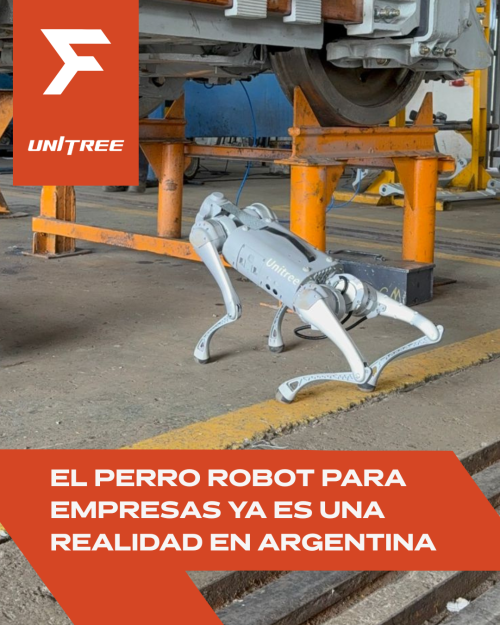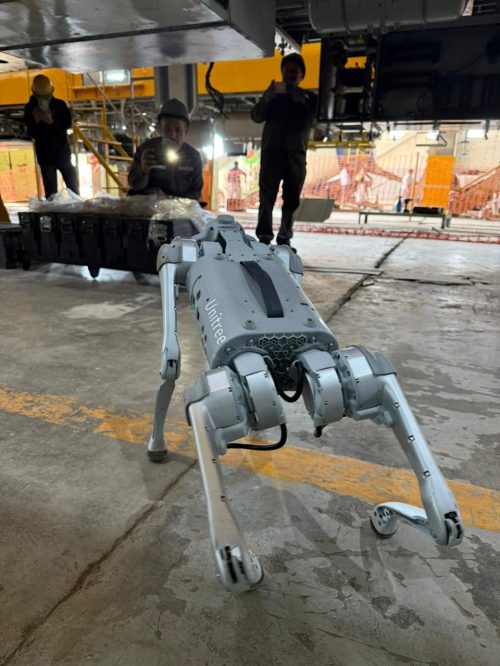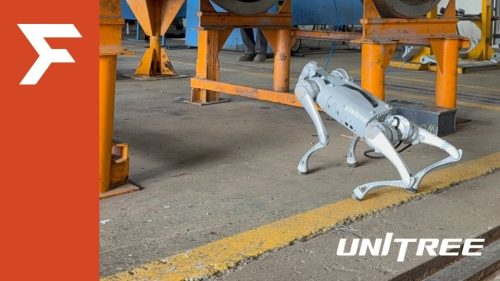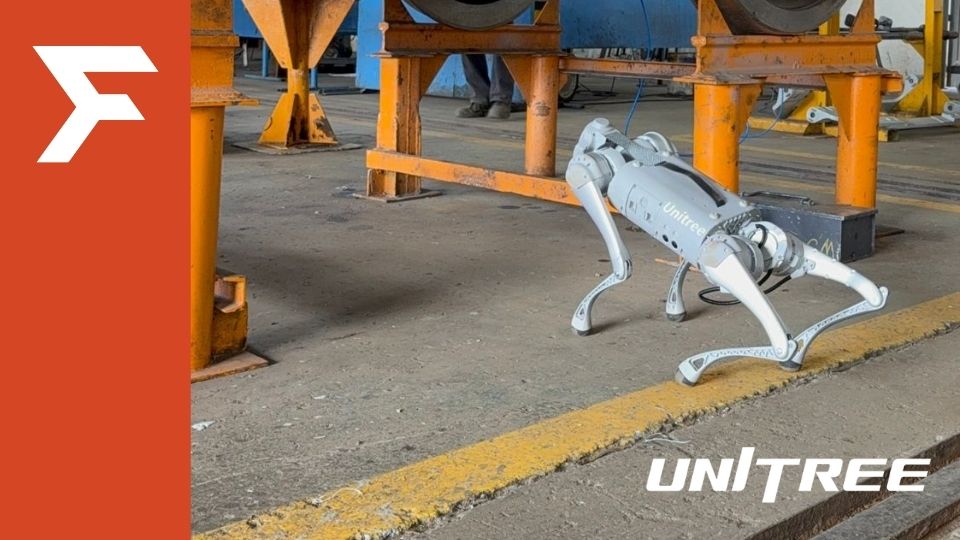It’s Not Science Fiction: Robot Dogs Are Already Working
Today, there are companies that use them every day, in real environments, for tasks that people previously did in complicated areas, or that were directly skipped due to lack of resources.
What is a Robot Dog and What Can It Do for Your Company?
A robot dog is an autonomous quadruped device, designed to move in places where other robots or people cannot reach. They typically incorporate technologies such as:
- 360º cameras and LiDAR sensors
- Artificial intelligence for object and person detection
- Autonomous navigation algorithms
- WiFi or 5G connectivity for remote control or cloud
- Payload capacity to carry sensors, equipment, or tools.
But more than its technology, what matters is what it can do for you:
- Traverse facilities unsupervised
- Detect temperature changes, human presence, leaks, or failures
- Monitor safety and hygiene conditions
- Patrol sensitive or hard-to-reach areas
- Record everything and send automatic reports
Furthermore, being modular, they can be customized with multiple sensors according to the needs of each industry: from a car factory to a chemical plant or a construction site.
All this, without pauses, without human risks, and without improvisation. The robot dog does not replace anyone, but it frees up resources and reduces errors.

Concrete Cases: How a Robot Dog is Used in Companies Today
Here we are not talking about theory. We have already seen it working in plants, warehouses, and real environments in Argentina. These are some of the tasks that the robot dog for businesses is already performing:
In industrial environments, these robots are used to perform routine inspections. For example, they can verify if a valve is closed, if a temperature exceeds normal limits, or if equipment is generating anomalous noise. If something is not right, the robot dog detects it, records it, and reports it.
This prevents small failures from leading to costly accidents.
Another great application is in risky environments. Where there are toxic gases, extreme temperatures, radiation, or unstable structures, sending a human is not a viable option.
Here, the robot dog can do the work: it enters, records, measures, scans, and returns. Companies gain safety and avoid exposing their personnel.
Autonomous patrolling is another star function.
Companies can program routes for the robot to periodically patrol their facilities, identify people, detect intruders, evaluate critical points, or even interact via voice commands.
Companies that are already using them in real tests: Roggio, BRF, Gestamp, Dayco, Cargo, Manfrey. All with different needs, but one thing in common: they seek efficiency, traceability, and safety in complex operations.
These experiences not only demonstrate technical feasibility but also the real interest of the Argentine business sector in this cutting-edge technology.
The Path in Argentina: Framex + Aiphag + Unitree Robotics
At Framex, we work with Aiphag to implement this equipment in real-life companies in the country.
The first robot to arrive was the Unitree Go2Edu, designed for operational inspection, surveillance, and patrolling tasks. It adapts to different terrains, walks up to 17 km/h, detects people and objects, and moves without human intervention.
We take care of bringing it, testing it, integrating it, and supporting its deployment. And we are seeing it work in companies with demanding environments.
At Framex, we don’t sell ideas: we implement real solutions.
Unitree Go2Edu and Unitree B2: Power, Precision, and Fieldwork
The Go2Edu works perfectly for surveillance and regular patrols. But when the challenge demands more—payload, autonomy, resistance—the Unitree B2 comes into play, the brand’s most powerful model to date.
The B2 is designed for extremes. These are its credentials:
- Payload of up to 40 kg
- Speed up to 6 m/s (over 21 km/h)
- Extended battery life: 4 hours in active work mode, up to 6 hours in power-saving mode
- Dual LiDAR sensors + 4D wide-angle cameras
- IP66: total protection against dust and water, ready to work in rain or hostile environments
Do you want to inspect ducts 2 meters high or send equipment to a corridor between boilers at 40°C? The B2 goes, records, analyzes, and brings it back to you.
Without pauses, without risks.

Why Add a Robot Dog to Your Company?
It’s not just about innovation.
It’s about operational logic. These are the real advantages we’ve seen with our clients:
- Safety: You avoid exposing people to dangerous areas. The robot enters, records, measures, and returns. If there’s a failure, it alerts you before it becomes a major problem.
- Efficiency: It performs repetitive tasks every day, without errors or omissions. You free up your team for what truly matters.
- Operational Intelligence: It detects, analyzes, and reports. It doesn’t just patrol: it makes simple decisions on its own and integrates with your system if you need it.
- Recording and Traceability: Everything is recorded, uploaded, and available. Temperatures, images, maps, alarms, routes. What used to be done with 3 people and 4 spreadsheets is now automatic.
- Adaptability: There’s no need to remodel the plant.
The robot adapts. Today it’s patrolling, tomorrow it’s inspecting. It’s a tool, not a project.
And the Challenges? They Exist, But They Are Solvable
Like any technology that marks a change, robot dogs for businesses have barriers to overcome:
- Initial cost: it’s not minor, but compared to the cost of a line stoppage, an accident, or an incomplete inspection, it quickly justifies itself.
- Internal resistance: at first, it generates doubts. But when the team sees it work, their perspective changes. Because it delivers.
- Infrastructure: if you have good connectivity, you exploit it to the maximum. If not, it can still operate, but with more limited functions.
The important thing: you don’t need to be a “tech” company to adopt it. It’s enough to have a real problem that the robot can solve. And in industry, there’s plenty of that.
What’s Next: More Integration, More Autonomy, More Industry
The future is clear: more autonomy, more integration with management platforms, more operational intelligence. What is innovation today will be standard in 2 years.
- Robots that patrol and report on their own
- Connection with industrial sensors and IoT
- Predictive analysis based on automated patrols
- Drones + robot dogs working together
The value will no longer be just in the hardware, but in what they do with the data. And that’s where companies that get ahead win.
In Summary: Is It Worth Adding a Robot Dog to Your Operation?
Yes. If you have complex operations, risky areas, repetitive tasks, or a need for traceability, the robot dog for businesses is a concrete solution, not an experiment.
And in Argentina, it’s already working. At Framex, we support you throughout the entire process: from equipment selection to in-plant testing, support, and training. Because we don’t sell technology; we implement solutions.
Want to See It in Action?
Coordinate a demo or ask us for more information. We’ll show you how it can work in your environment, with your variables, in real time.
Framex. Robotics that works.

